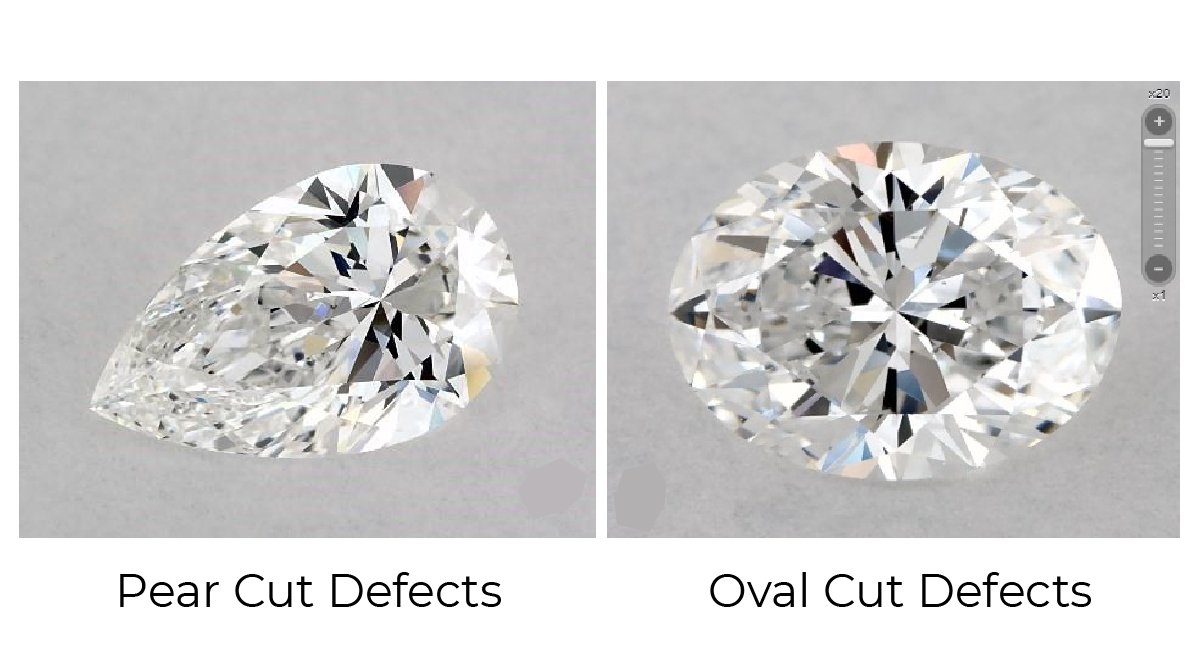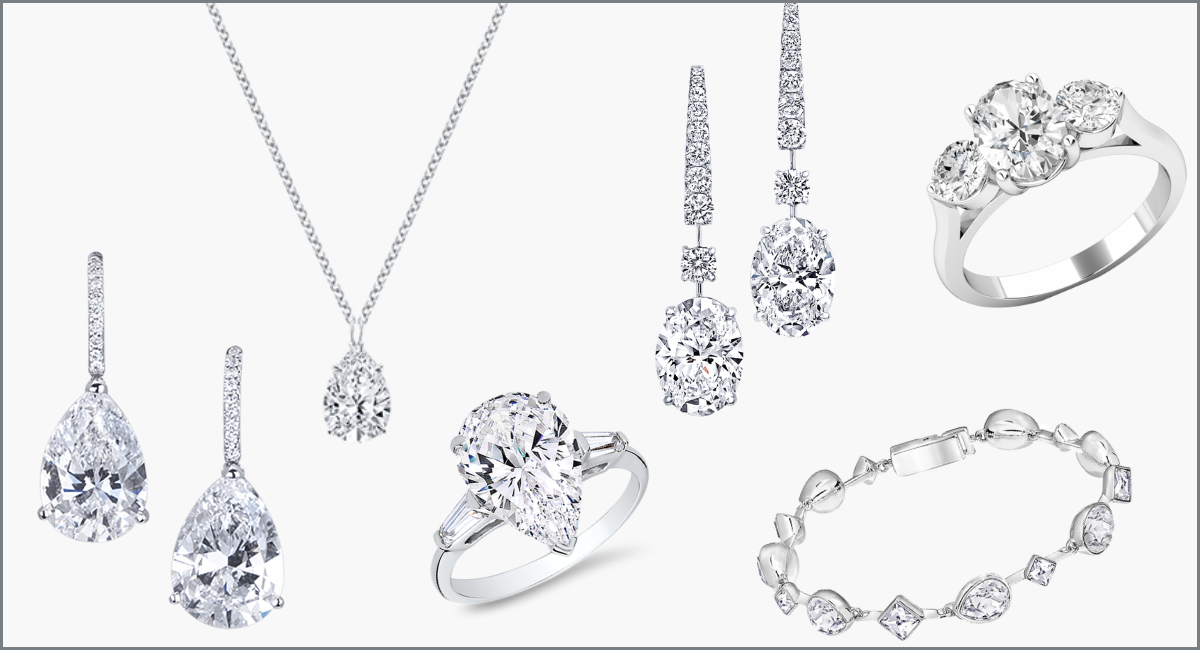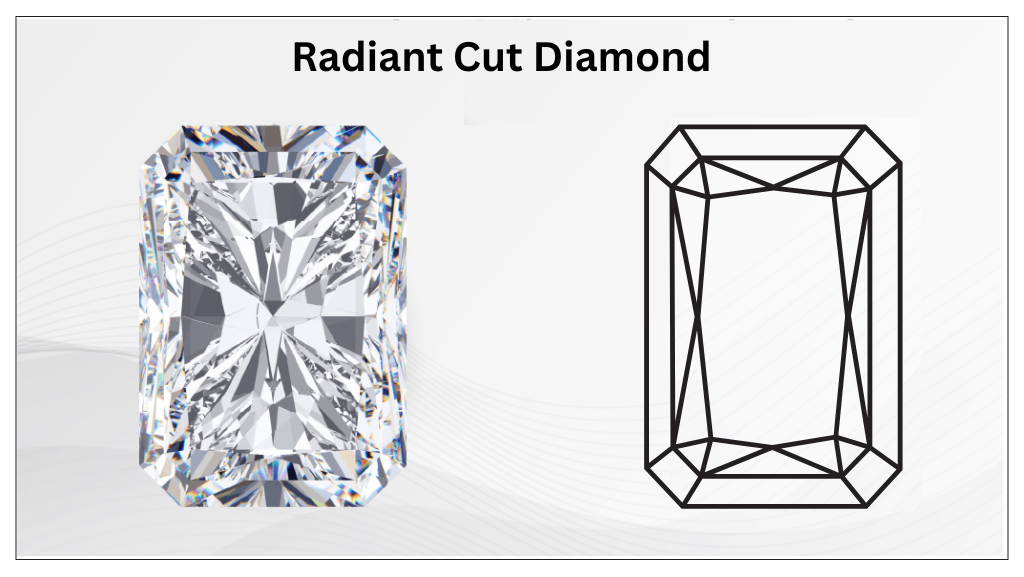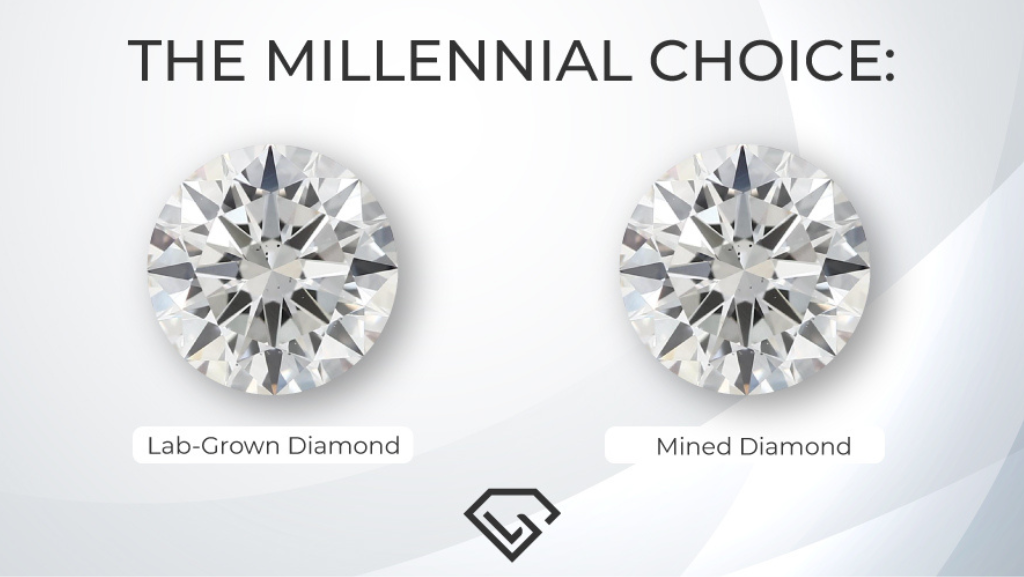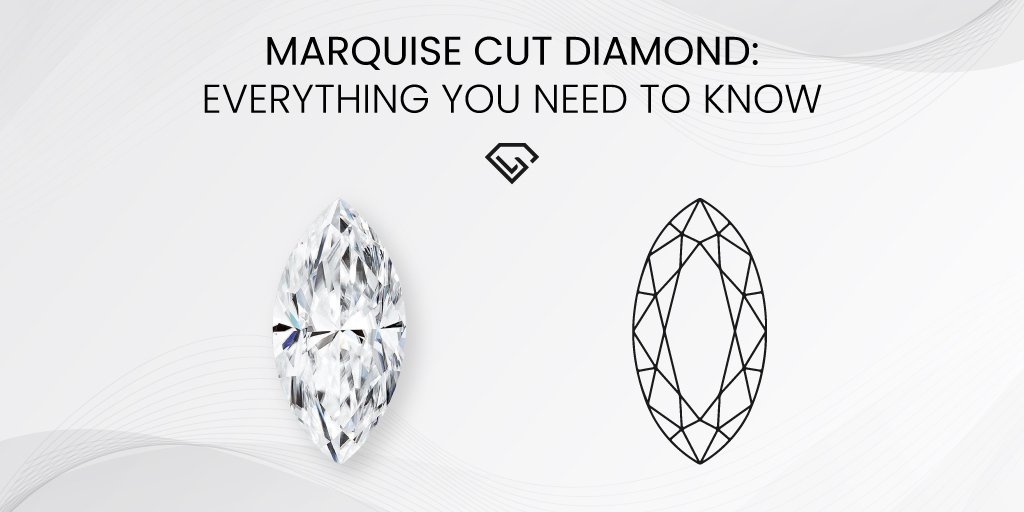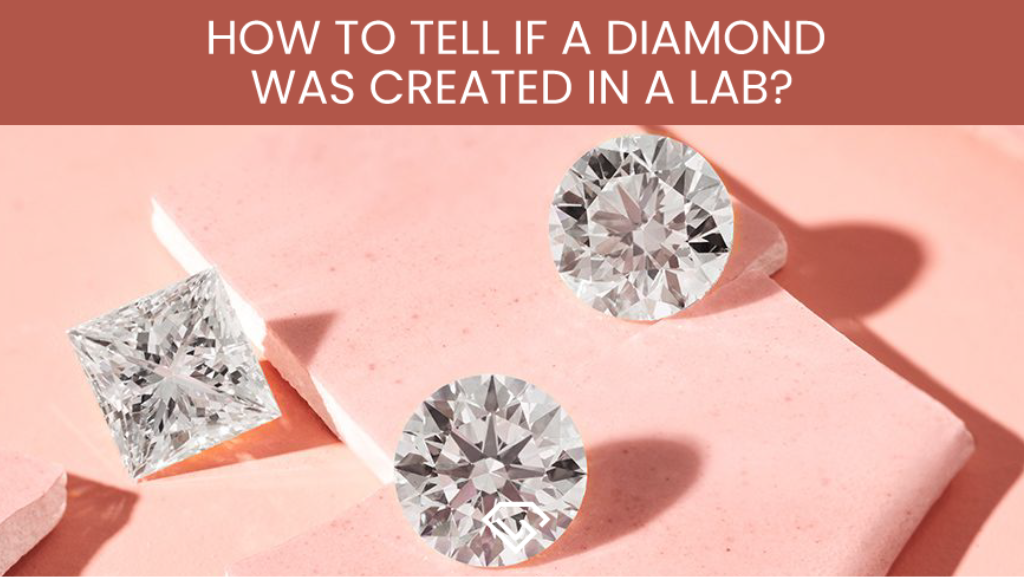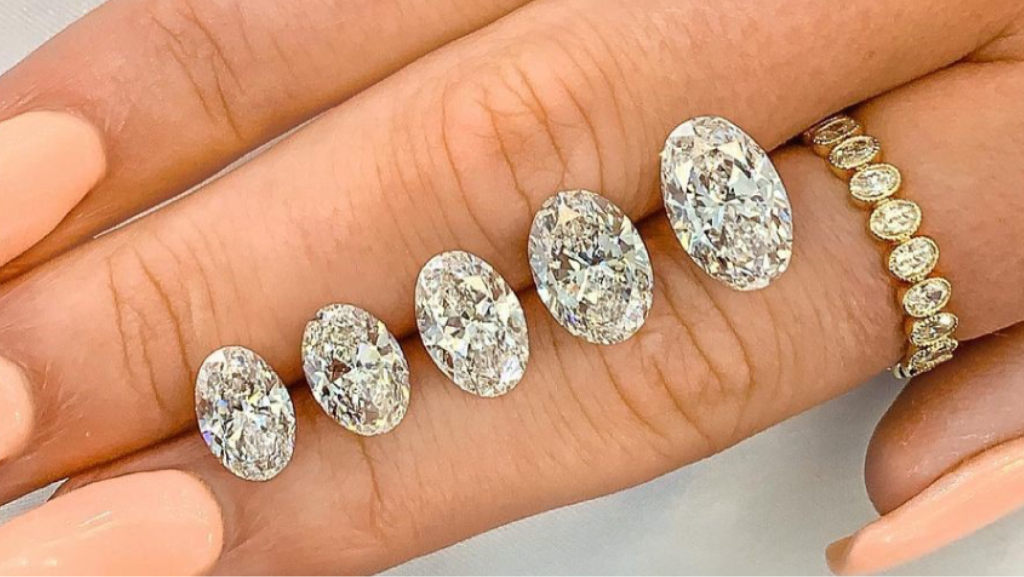Pear vs Oval Cut Diamond: Which One to Choose?
Diamonds, unequivocally, stand as one of the Earth’s most cherished treasures. Their rich history, the intricate process of their formation, and their timeless elegance altogether elevate the allure of those who adorn them.
In this blog article, join us as we unravel the charm embedded in the choice between pear vs oval diamonds. We focus on the distinctive features of these two cuts and how they contribute to the elegance and personality of anyone who adorns them.
The nature of diamonds is such that they effortlessly blend into any kind of jewelry one desires. Any kind of jewelry like earrings, bracelets, necklaces, pendants, wedding bands, or rings, can adorn this beautiful gem without reducing its beauty in the slightest.
The versatility of lab diamonds is one such thing that further enhances their beauty. They seamlessly blend into any kind of metal, jewelry, and outfit. They go with every kind of occasion- classic, fancy, modern, casual, or even traditional.
One factor which is the reason for the beauty of a diamond is its cut. The cut of a diamond depends on craftsmanship and is one of the most important factors determining the brilliance of a diamond.
There are particularly four factors that affect the brilliance of a gem, also known as the 4C’s of a lab diamond, which are- Cut, Color, Clarity, and Carat. The brilliance of the diamond is affected by the cut as it directly impacts the amount of light reflected internally from the facets of the diamond.
A diamond cut is what corresponds to its shape and based on these facets and the shapes, there are various types of cuts, in which diamonds can be available. Some of the famous diamond cuts include:
round brilliant (the most common type of cut), pear cut, marquise cut, oval cut, princess cut, cushion cut, emerald cut, radiant cut, asscher cut, kite cut, baguette cut, heart shape, and trillion cut diamond.
We shall explain some of these shapes vis-à-vis pear cut and oval cut diamonds further in this article.
Pear Cut Diamond vs Oval Cut Diamond
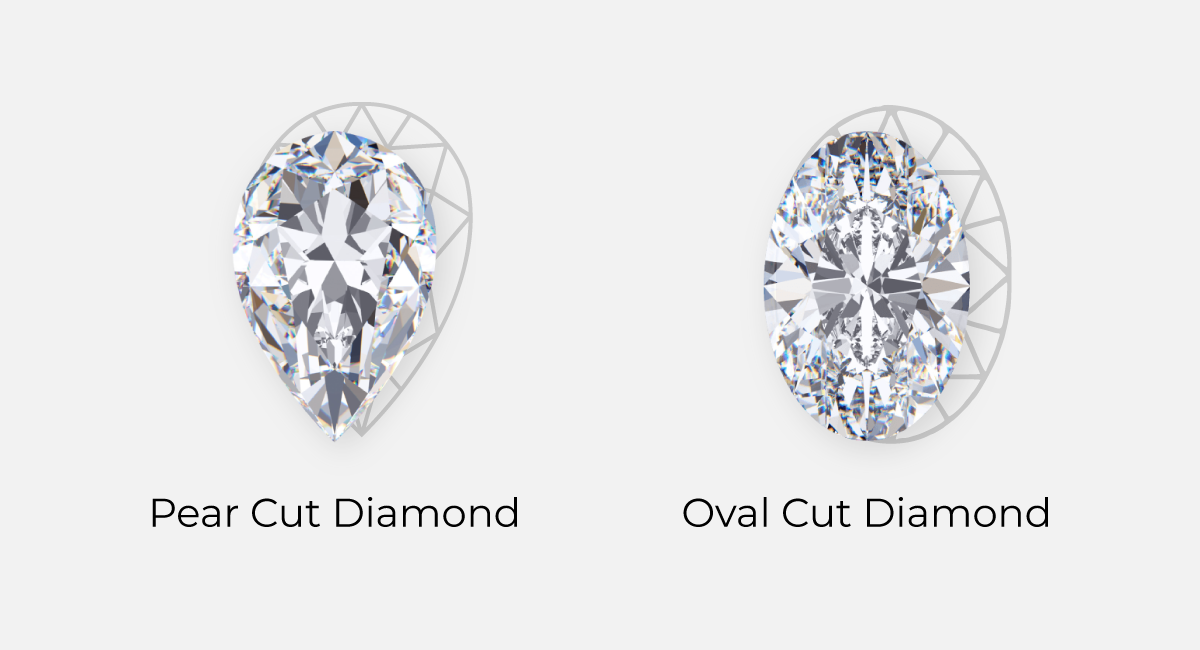
Now coming to the topic at hand. Which type of diamond cut is better: pear or oval? From an individual’s perspective, it completely depends on what you think looks better. But from a jewelers perspective, the technicalities of the diamonds may state otherwise. So, let us dig deep and get to know the specific characteristics of the pear cut diamond vs oval cut diamond.
What are Oval Cut Diamonds?
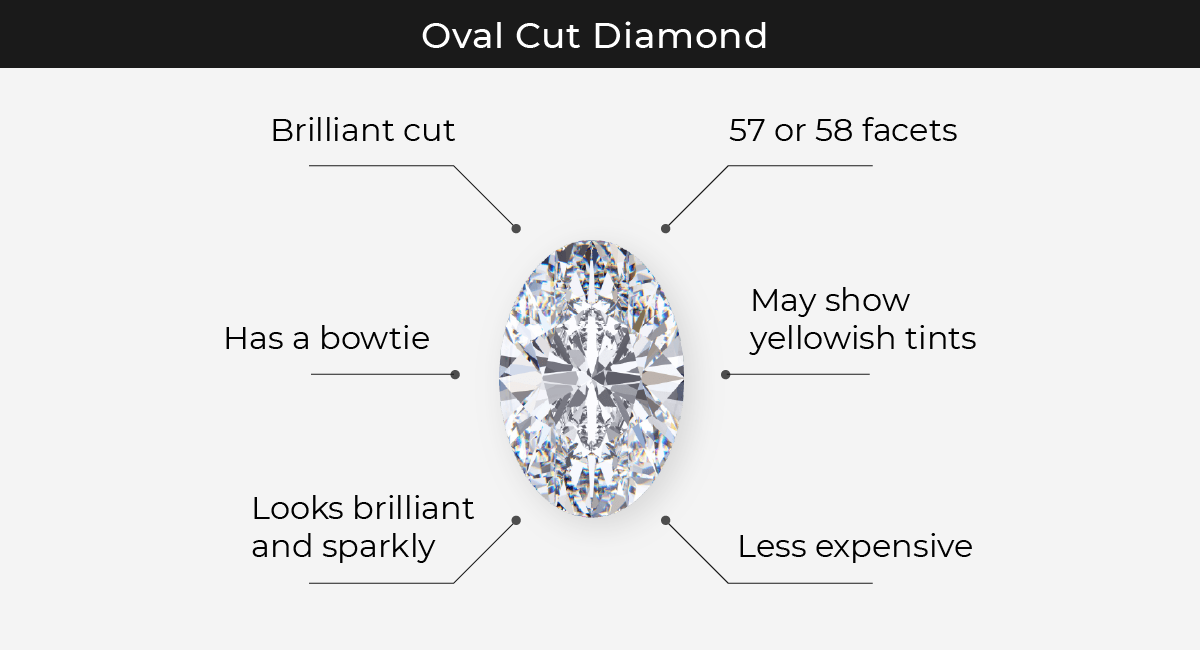
The oval cut diamond is a gem of unparalleled brilliance and unique charm. Classified as a “fancy” shape, its elongated design not only imparts a larger appearance than other shapes of equivalent carat weight but also contributes to a slender and elongated aesthetic. Creating the illusion of more slender hands and fingers.
Technically labeled as an oval modified brilliant, this cut shares the 57 facets of the round brilliant, featuring 33 on the crown and 24 on the pavilion, with the option of 4, 6, or 8 main pavilion facets for added uniqueness.
Beyond technicalities, the oval diamond emerges as a symbol of brilliance, durability, and style. Priced more affordably than round diamonds, it strikes an elegant balance between the timeless round cuts and the height of marquise cuts, making it a preferred choice for those seeking a rounded design with character.
Celebrities such as Blake Lively and Hailey Bieber have propelled the popularity of oval cut diamonds since beyond the visual aesthetics, these gems embody a modern twist on traditional diamond cuts.
Oval cut diamonds are a classy way to chisel a diamond, while also being unique due to their symmetrical design. The elongated length makes the diamond appear larger than it is.
The modern literature of the 19th century made it fashionable, but it was not that influential back then. The modern oval cut with more facets was brought about as a design for lab diamonds with larger inclusions.
Oval diamonds have enjoyed popularity for centuries, with their origins traced back to the 1300s, though literature began describing them in the 1800s.
In the early 1960s, Russian diamond cutter Lazare Kaplan perfected the oval cut, transforming rough stones into stunning gems and significantly enhancing their brilliance.
His technique, still used today, solidified the oval diamond as an everlasting favorite. Recommended for this shape are H color or better and SI1 or SI2 for clarity, but it’s essential to be cautious of the ‘bowtie effect,’ a potential dark area in the diamond’s center. Oval cuts are also preferred due to their shape, owing to less chipping or damage, due to no presence of corners or edges in the shape.
For those intrigued by the elegance of oval diamonds, rose gold oval engagement rings and oval diamond rings with diamond bands offer enchanting options. Consider exploring our blogs on “2 carat oval diamond ring” or “2.5 carat oval diamond ring,” where you can delve deeper into the world of exquisite oval diamond ring jewelry.
Shape
Carat
Cut
Color
Clarity
Price
oval
2.06
Ideal
G
VS2
$543 $517
View
oval
2.02
Ideal
D
VVS2
$602 $573
View
oval
2.01
Ideal
D
VVS1
$2960 $2114
View
oval
2.01
Ideal
D
VVS1
$2960 $2114
View
oval
2.06
Ideal
D
VVS1
$3031 $2165
View
oval
2.09
Ideal
E
VS1
$777 $583
View
oval
2.01
Ideal
D
VVS1
$2960 $2114
View
oval
2.02
Ideal
D
VVS1
$2974 $2124
View
oval
2.03
Ideal
D
VVS1
$2988 $2134
View
oval
2.10
Ideal
D
VVS1
$3088 $2206
View
oval
2.01
Ideal
D
VVS1
$2960 $2114
View
oval
2.07
Ideal
D
IF
$8583 $6131
View
oval
2.06
Ideal
D
VVS1
$3031 $2165
View
oval
2.02
Ideal
D
VVS1
$2974 $2124
View
oval
2.06
Ideal
D
VVS1
$3031 $2165
View
oval
2.10
Ideal
D
VVS1
$3088 $2206
View
oval
2.01
Ideal
D
VVS1
$2960 $2114
View
oval
2.07
Ideal
D
IF
$8015 $5725
View
oval
2.02
Ideal
D
IF
$8378 $5984
View
oval
2.01
Ideal
D
IF
$7234 $5167
View
What are Pear Cut Diamonds?
The pear cut diamond was first introduced by Lodewyk van Bercken, who was from Belgium. He is known to have introduced the lab diamond cut in the 1400s. A vintage and romantic piece of jewelry, overcoming time and impacting its ageless beauty. This is the pear cut that stays a true classic for a length of time. A true pear cut diamond is a combination of a round brilliant cut and a marquise cut diamond.
The pear cut, so named for its teardrop profile, subtly elongates the finger. The pear cut allows for more customization of the diamond’s dimensions than the typical round cut. This unusual lab diamond has a circular base and tapers to a pointed apex, earning it the name “teardrop diamond.”
The pear cut is popular for engagement rings since it is considered to be a pleasing shape for just about anybody. It has 58 facets spread across its body with a large table similar to that of a round brilliant cut diamond.
Although it has been around for centuries, many people today still consider it to be a trendy, classy style statement. This lab diamond cut is both unconventional and lovely at the same time.
Shape
Carat
Cut
Color
Clarity
Price
pear
2.02
Ideal
F
VS1
$597 $569
View
pear
2.02
Ideal
G
VVS2
$1385 $989
View
pear
2.00
Ideal
D
VVS2
$11412 $8559
View
pear
1.90
Ideal
D
VVS1
$2012 $1437
View
pear
1.84
Ideal
D
VVS1
$2076 $1483
View
pear
1.83
Ideal
D
VVS1
$2127 $1519
View
pear
2.01
Ideal
H
VVS1
$1046 $747
View
pear
2.01
Ideal
G
SI2
$753 $538
View
pear
2.02
Ideal
G
SI1
$1029 $735
View
pear
2.02
Ideal
G
VVS2
$1093 $781
View
pear
2.01
Ideal
G
VVS2
$1379 $985
View
pear
2.00
Ideal
D
VVS2
$1890 $1350
View
pear
2.01
Ideal
G
VVS2
$1379 $985
View
pear
2.04
Ideal
G
VVS2
$1399 $999
View
pear
2.03
Ideal
F
VVS2
$1477 $1055
View
pear
2.06
Ideal
F
VVS1
$1753 $1252
View
pear
2.02
Ideal
E
SI1
$1182 $844
View
pear
2.02
Ideal
E
VS1
$1470 $1050
View
pear
2.02
Ideal
D
SI1
$1266 $904
View
pear
2.00
Ideal
D
VS1
$1750 $1250
View
Physical Appearance of Pear vs Oval Diamonds
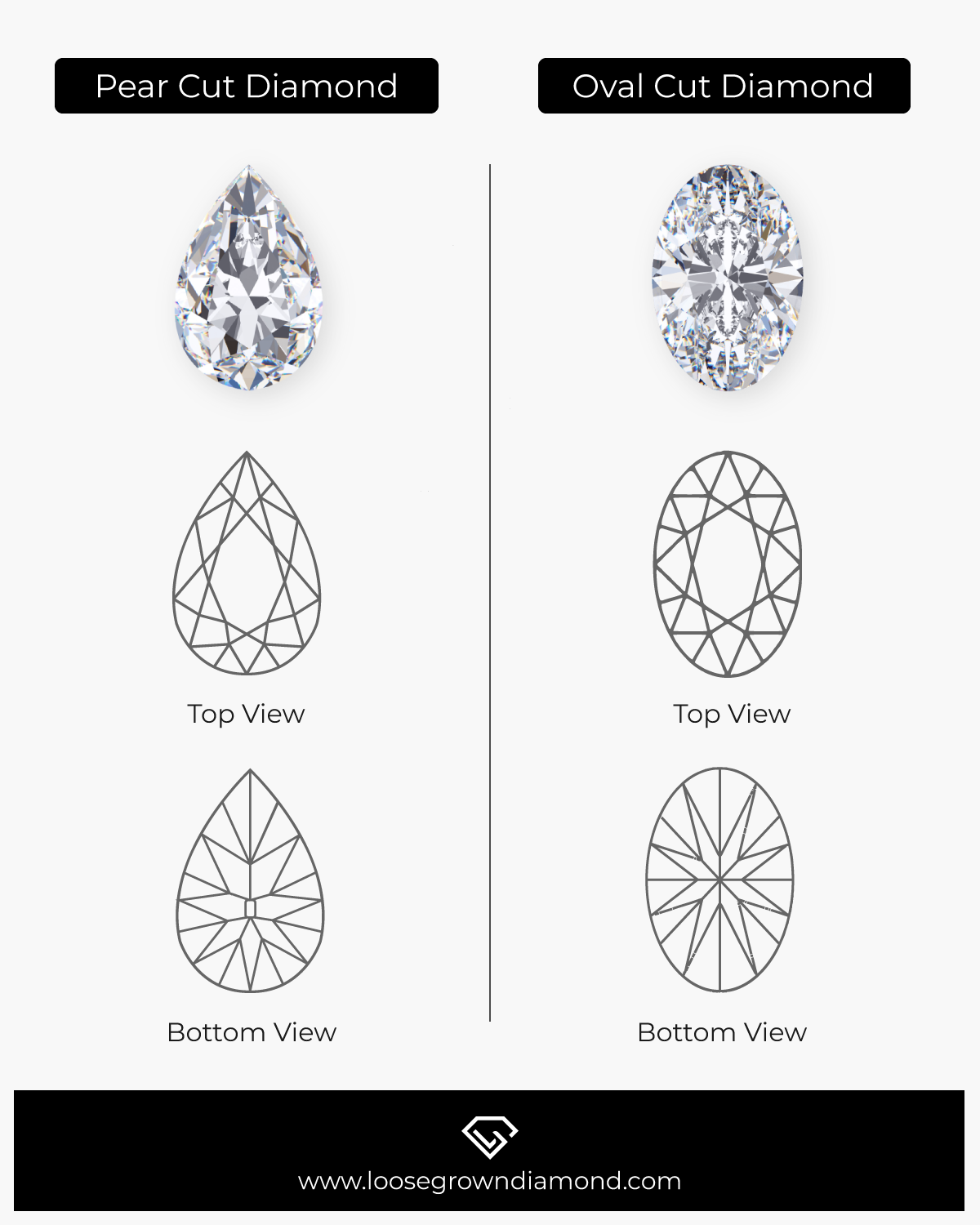
Pear shaped diamonds are worn when the wearer desires a feminine and delicate appearance. The highlighted base of the pear cut diamond tends to make fingers appear much more delicate and slimmer.
The L/W (Length/Width Ratio) proportion of the pear cut diamond ranges from 1.5 to 2.0. The classic symbolism of the pear shaped diamond as a teardrop is the reason for it being more preferred in engagement rings.
Pear is a much more classic and antique kind of cut. Pear diamonds are a unique cut and are keenly preferred for the classic vintage elegance that pear cut jewelry offers.
An excellent pear diamond, like the one depicted above, is a thing of beauty thanks to its tapered tip at the top and smoothly rounded bottom. They might be long and lean or short and round. The pear diamond cut is one of the only two asymmetrical diamond shapes (the other being the heart cut) that are attractive, graceful, and relatively rare, notwithstanding its asymmetry.
When you look at an oval cut diamond from above, you can see that it has a long, symmetrical shape with rounded ends. It has a classic and beautiful look. The pavilion facets meet at the bottom, showing the skilled handiwork that makes this classic yet modern diamond cut shine and sparkle the most. Overall, the oval shape is a great mix of round brightness and a unique long silhouette that looks good from any angle.
The oval cut is an elongated circle sort of shape. This elongated appearance makes the bearer’s fingers look longer than they are. The thin form of the oval tends to apply its characteristics to the wearer.
The size ratio (L/W) of an oval cut diamond is from 1.5 to 1.7. This ratio is the ideal size and helps bring out the most of the diamond cut. This cut is an ideal look for outdoor wear since it has minimal chances of damage during any kind of vigorous activity.
An oval cut diamond is very unique and charming, with a bit of a modern edge. Oval is a classic piece recommended for regular wear as it can cope with rough activities as well as go around as a nice piece of gem that can be paired with any metal.
Due to the strikingly symmetrical design of the oval cut, it is preferred over the pear cut.
What are the Cut Defects Found in Pear vs Oval Diamonds?
Pear Cut Defects:
- One common issue is the bowtie effect, a dark area in the center caused by light leakage, which careful craftsmanship can help avoid.
- Uneven shoulders may affect the overall symmetry, and the alignment of the pointed end with the center of the rounded end is crucial for aesthetic appeal.
- Buyers should also consider size and length ratios based on personal preferences. Additionally, the tip of the pear cut is one of the most important parts that needs to be looked after. The delicate nature of it can lead to the chipping of the sharp edges of the stone.
- Furthermore, due to irregular and uneven craftsmanship, asymmetry can impact brilliance and cut. Delicate mishaps in craftsmanship can result from the intricate skill required, and the need to know the exact dimensions for the crown and pavilion may pose an issue for certain craftsmen.
Oval Cut Defects:
- The most prominent defect in the oval cut is the bow-tie effect. This effect has a bowtie-shaped black band in the center of the gem. It can occur due to the elongated shape of the gem and also uneven or irregular craftsmanship in the cut of the gem.
- It must be noted that the visibility of these defects is highly contingent upon craftsmanship and the individual characteristics of each diamond.
- These intricacies underline the importance of thorough assessment and consultation with a reputable seller like Loose Grown Diamonds when choosing an oval cut diamond to ensure a well-balanced and visually appealing gem.
Diamond Shape vs Diamond Cut
The shape of a diamond and the cut of a diamond are two separate things, which are often confused with one another. The shape or form is the outline of an object, specifically the diamond outline. Given below is a table that explains the difference in detail.
| Aspect | Diamond Shape | Diamond Cut |
| Definition |
Refers to the overall form (e.g., round, heart) and visual appearance of a diamond, influencing the jewelry’s design and symbolism |
Encompasses the precision of symmetry, proportions, and polish, defining the diamond’s reflective qualities and play of light |
| Examples |
Round (classic and versatile), Princess (square), Emerald (rectangular), Cushion (square with rounded corners), Oval (elongated and flattering), Heart (symbol of love), Pear (teardrop), Marquise (elliptical) |
Brilliant (triangular or kite-shaped facets), Step (parallel facets) |
| Impact on Beauty |
Influences the jewelry’s overall appearance, aesthetic, and style, contributing to its uniqueness |
Directly affects brilliance, sparkle, and the visual allure of the diamond, shaping its inherent beauty |
| Reflectivity |
Reflects light and maximizes brightness, especially in round and brilliant-cut diamonds |
Can result in exceptional brilliance (Brilliant cut) or parallel facets (Step cut), influencing the diamond’s interaction with light and external radiance |
| Symbolism |
Carries varied symbolism based on shape and design, with each shape holding unique significance |
Reflects the artisan’s craftsmanship and skill in shaping the diamond, contributing to the stone’s overall character and the emotional essence it conveys |
| Light Interaction |
Influences how light interacts with the diamond surface, showcasing the play of light and enhancing its visual appeal |
Enhances or diminishes brilliance based on cut quality, playing a pivotal role in determining the diamond’s overall luminosity |
The cut of the diamond affects the brilliance of the gem and is of very high-quality importance. This is affected by the quality of several things- namely the number of facets, the symmetry carved by the craftsman, the dimensions of the gem, and the reflective quality of the diamond.
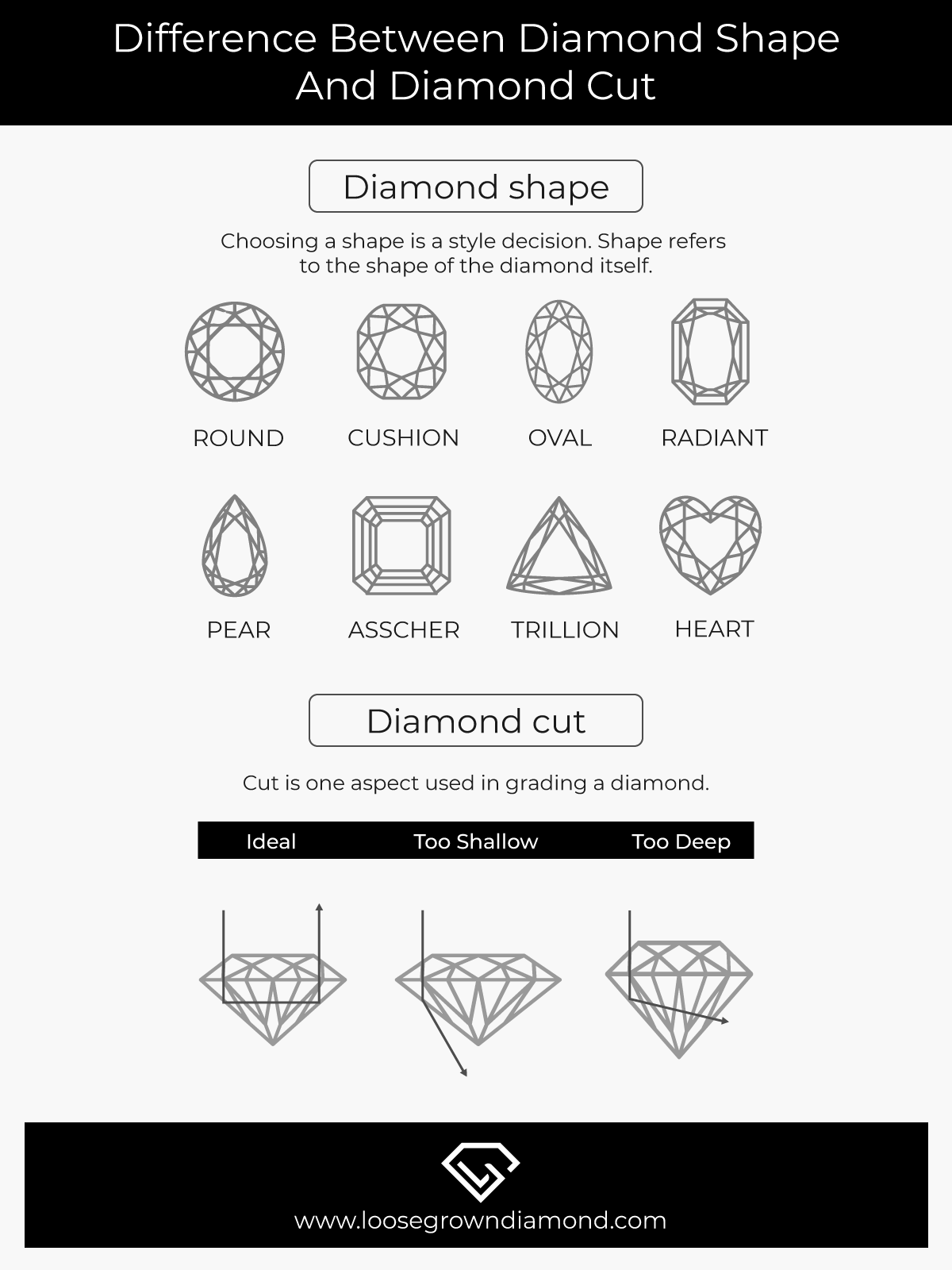
Intricacy and cut of the gem, directly impact the refracting light and fire of the diamond. It is how the diamond is cut that determines the precise size. This diamond size chart will give you a thorough approach to identifying your size.
Pear vs Oval Diamonds in Jewelry: Which One Looks Better?
Pear Cut Diamond
Pear cut diamonds look beautiful paired with all kinds of metals. Using white metal lays back the metal and gives a central position to the diamond while letting it enhance itself. White metals let the diamonds cut and set be of utmost importance. Some white metals which are used are silver, platinum, and white gold.
This antique cut looks fashionable and vintage with gold, as the yellow hue adds a touch of antiquity to the jewelry. Sometimes the quality of the lab diamond is not pure and can lead to a yellowish tint in the shade of the diamond, thus using a yellow metal can help cover up the quality of the lab diamond.
Rose gold is another unconventional metal, which is romantic and classic. The symbolism of a romantic with a romantic cut is suitable for a wedding engagement ring. The symbolism enhances one another, thus making it apt for the occasion.
Oval Cut Diamond
This stunning cut is a timeless piece that looks utterly beautiful in any kind of metal as well as any jewelry.
It is ideal to use the best kind of cut in white metal, because white metals like silver, white gold or platinum, tend to highlight the gem very powerfully.
If one chooses to go for lesser brilliant shades of the oval cut diamond, one can opt for yellow gold or even rose gold. Since these metal hues tend to subdue the flaws in the brilliance of the gem, they are very apt to be used for lesser brilliant diamonds.
Best Oval Cut Diamond Settings
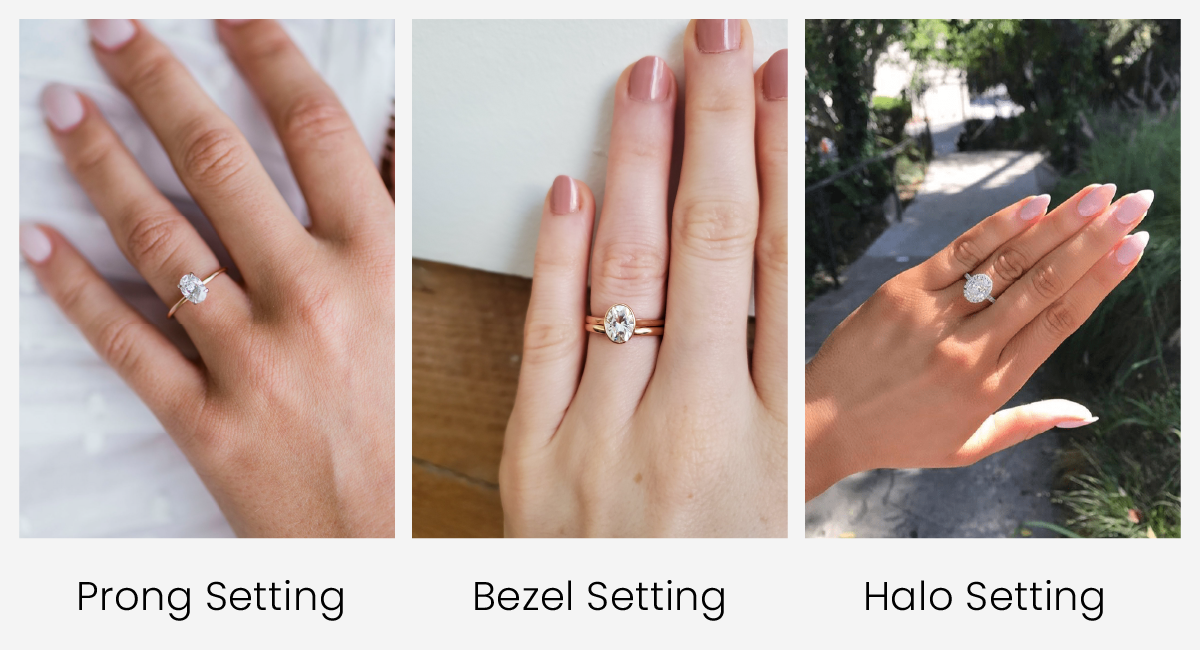
The oval is a cut that is an immediate choice after the round, as it is as versatile and accommodating as the round itself.
Oval Prong Setting
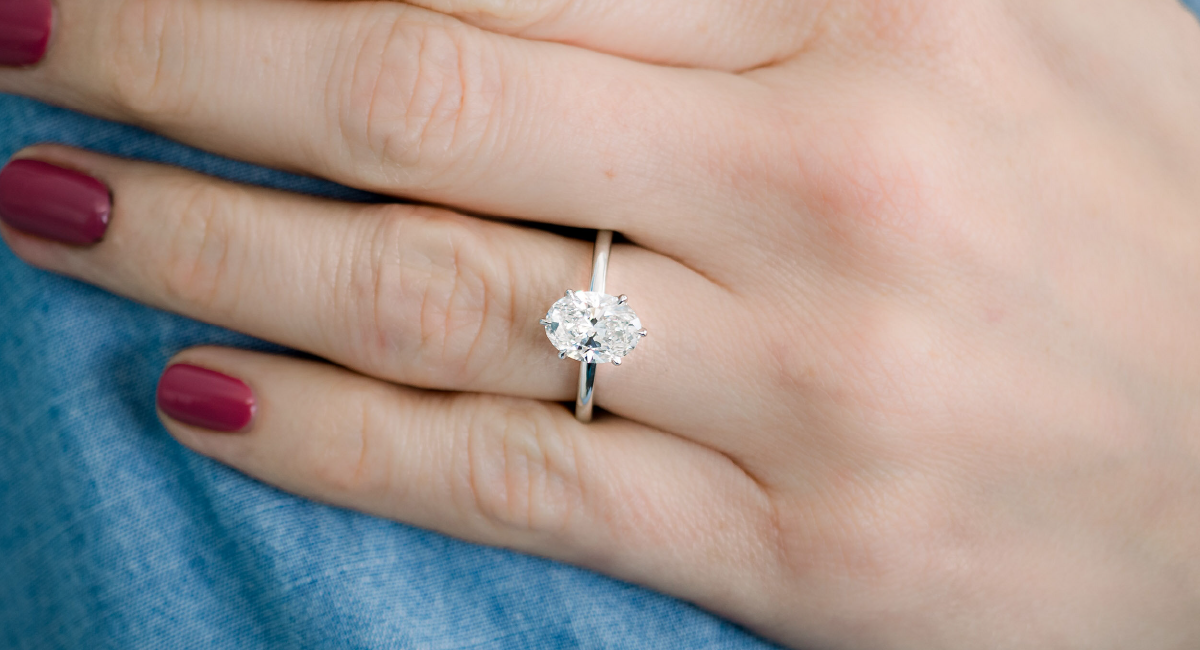
The oval cut is a cut highlighted in most of the settings. Particularly the prong setting is of much relevance since it tends to highlight the form of the oval while retaining the brilliance of the cut. The prong setting can have either 4 or 6 prongs to hold the diamond in position. The more the number of prongs, the safer the diamond is.
Oval Bezel Setting
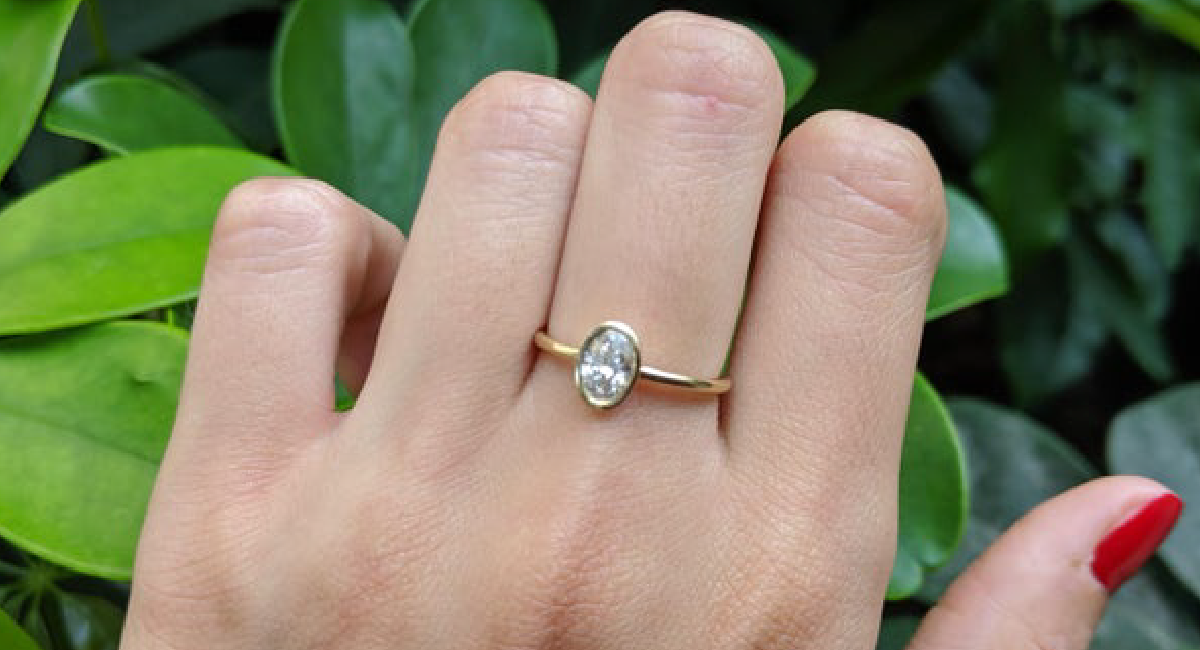
The bezel setting is also one that highlights the form and shape of the oval cut diamond, while safely securing the diamond in position.
Oval Halo Setting
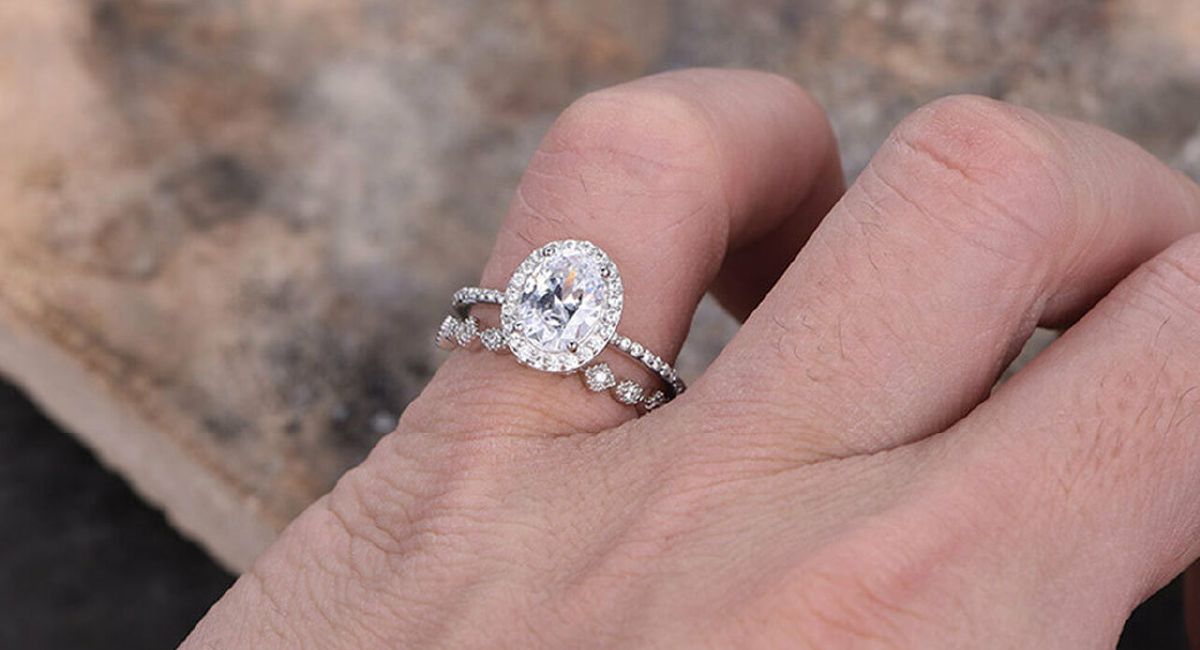
The halo setting is one that can make any diamond look more beautiful than it already is. The smaller diamonds add a classic essence to the oval cut.
Best Pear Cut Diamond Settings
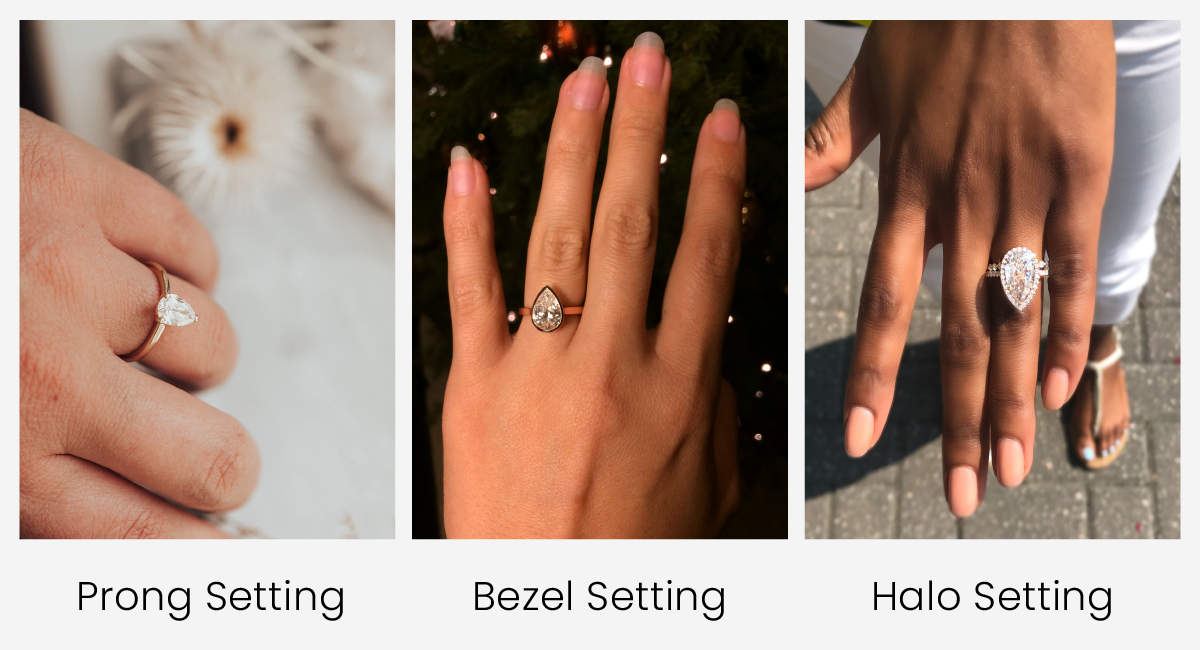
The pear cut is generally worn in rings by women, to provide a slender and delicate edge to the fingers
Pear Bezel Setting
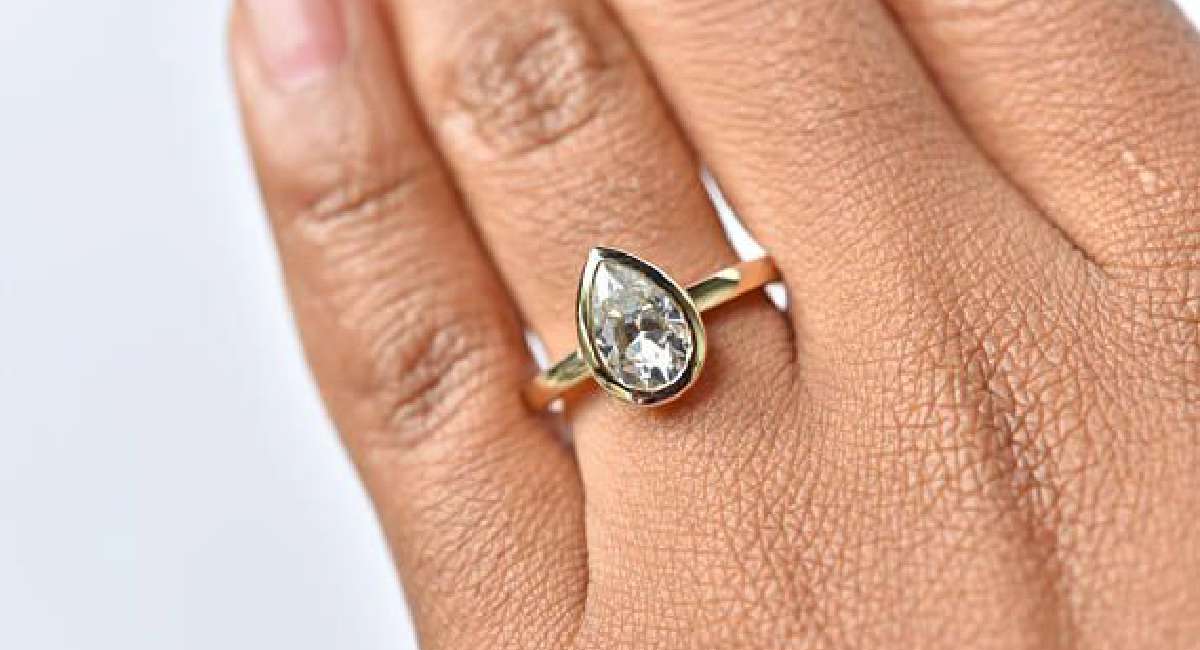
The delicate nature of the diamond prompts a safer fitting like a bezel. In the bezel, the ring of metal around the diamond safeguards the gem.
Pear Halo Setting
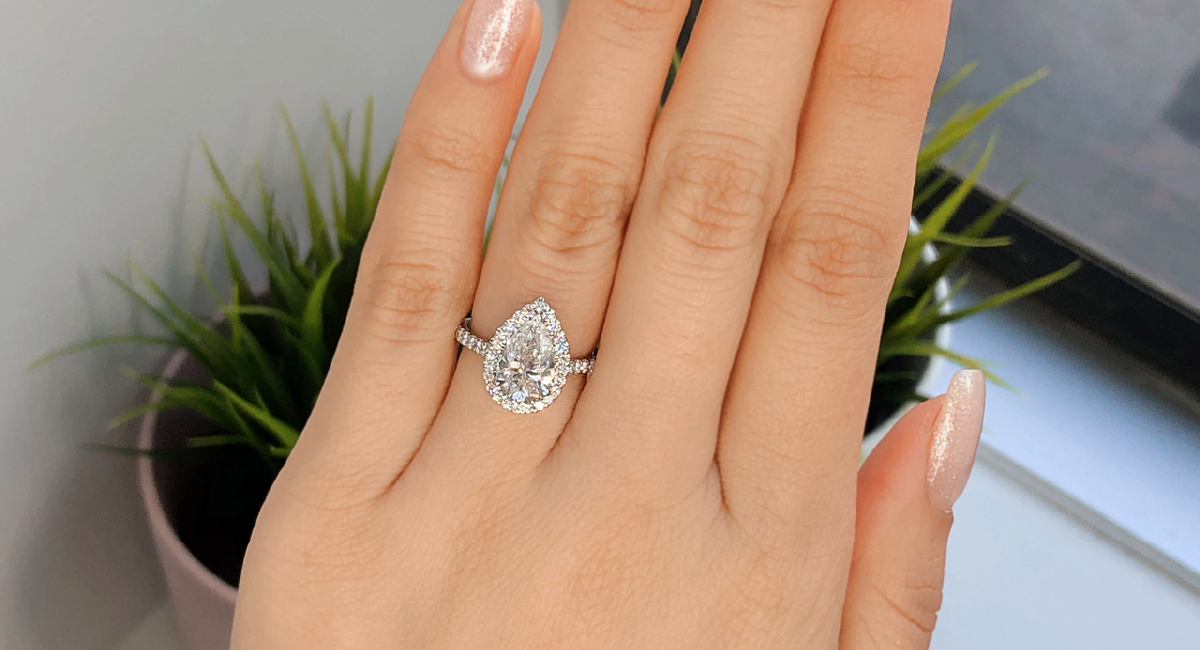
In halo, a line or two of smaller diamonds guard the main diamond. The point of the stone will not project out due to the settings and hence provide more safety to the gem.
Pear Prong Setting
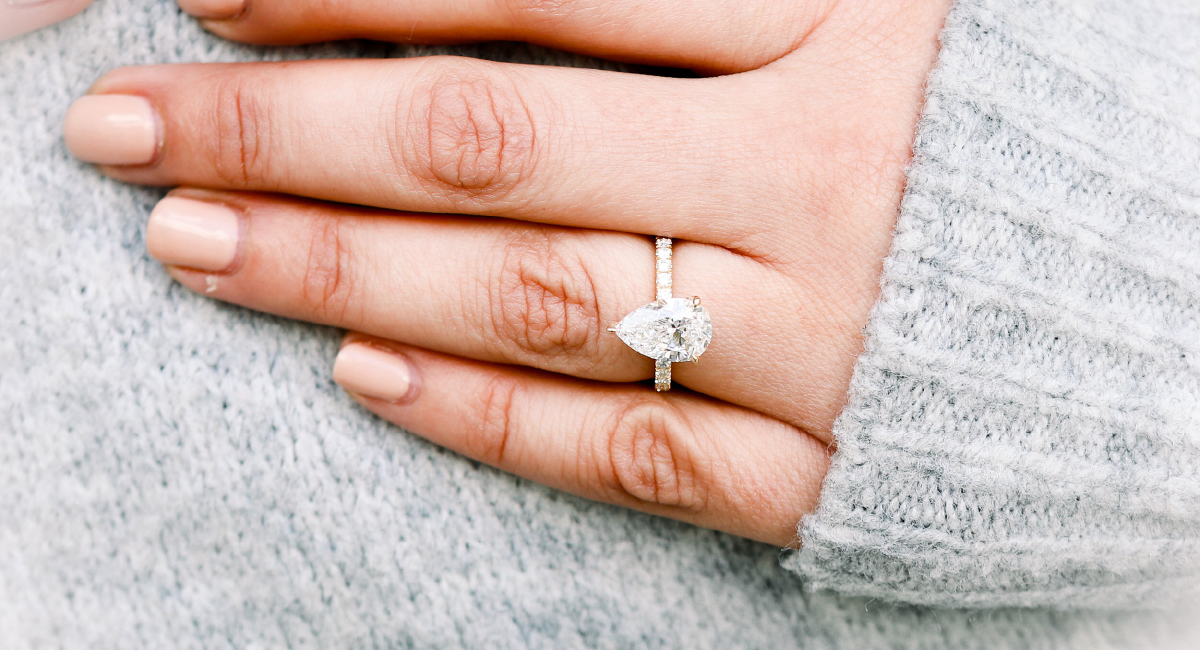
Prong is another option that is a beautiful setting for the pear. The maximum number of prongs is 6, where 3 take care of the bulge and the rest three focus on the tip. The tip is protected by a v prong, which prevents the gem from chipping. The v prong protects the gem as well as fabrics from being hung onto the sharp point.
Another setting, which is a 5 prong setting, is very similar to the 6 prong setting. In this setting, the lowest prong on the bulge is removed and the 5 others remain intact.
Prong is not a particularly safe setting for a pointed gem cut like the pear cut and can lead to chipping of the stone, or any other damage due to the pointed tip. Thus, it is advisable to take care while choosing the setting.
What are Certified Oval or Pear Diamonds?
If you want a beautiful and reliable diamond, choose an oval or pear shape that has been certified. These lab grown diamonds have passed stringent quality and authenticity tests at independent gem labs (Such as IGI, GIA, and GCAL).
Certified pear diamonds come with paperwork that specifies the lab diamond’s cut, color, clarity, and carat weight, giving customers peace of mind. The certification process for oval diamonds is exhaustive, addressing topics like dimensions and symmetry.
These certifications, issued by trusted gemological institutions, serve as references that reassure customers that their oval or pear diamonds are of the highest quality and conform to all industry standards.
Where to Buy Oval or Pear Diamonds From?
Loose Grown Diamonds is the go-to place to find high-quality, beautifully cut oval or pear diamonds. Specializing in lab grown diamonds, we provide products focused on ethical and transparent sourcing.
We offer a reasonably priced yet brilliant solution with our oval lab grown diamonds, which start at just $180. In a similar vein, pear diamonds can be had for as little as $160, giving customers with varying tastes and budgets plenty of options.
Moreover, if you find yourself confused about determining the cost of your chosen diamond, you can make use of our diamond price calculator.
There is no difference in the quality of the diamonds. The reason for the price difference is that the price of rough diamonds fluctuates throughout the year. Our production, however, is active throughout the year. Hence two identical diamonds can have different prices based on when they were made/crafted.
We are proud to say that we excel in this industry because of our dedication to quality and the satisfaction of our loyal customers. Take advantage of our exclusive discount code and save an extra price by entering the promo code at checkout. If you’re looking for an oval or pear diamond, look no further than LGD.
Conclusion
The pear and oval diamond cuts are equally elegant and classy in their unconventional way. Both of these cuts are different and thus are uniquely beautiful in all kinds of settings and jewelry.
There is some difference in designs and settings due to the symmetry, which impacts the wearer and the viewer. But, both of them have a classic edge to them based on the symbolism of engagement rings.
The beauty of these diamond cuts is ravishing and can be a very important characteristic to complement the outfit or even something as the lifelong promise of an engagement ring. Both these cuts make for a gorgeous diamond that is unique and versatile to fit in any style of jewelry.
FAQs
Which shape is more popular, pear vs oval diamonds?
Oval Diamonds are more popular than pear diamonds.
Are there price differences between pear and oval diamonds?
Prices can vary, but generally, pear diamonds tend to be less expensive than oval diamonds.
Do pear and oval diamonds have different facets and cuts?
Yes, pear and oval diamonds have distinct facet arrangements and cuts, contributing to their shapes.
How to wear a pear engagement ring on hand?
Wear a pear engagement ring with the pointed end facing toward your fingertips for an elongating effect on the hand.
Which diamond is better when comparing pear vs oval diamond?
It depends on personal preference; pear diamonds offer a unique teardrop shape, while oval diamonds provide a classic and elongated appearance.
Which diamond looks bigger while comparing pear vs oval diamond?
Oval diamonds often appear larger than pear diamonds of the same carat weight due to their elongated shape.
Which diamond is more expensive when comparing pear vs oval diamond?
Prices for lab grown diamonds may vary, but generally, pear diamonds are often more budget-friendly than oval cut diamonds. Consider purchasing from reputable sources for the best prices in lab grown diamonds.
Are pear diamonds more suitable for certain styles of jewelry?
Yes, pear diamonds are often preferred for pendants and earrings due to their distinctive teardrop shape that complements these jewelry styles.
Do oval or pear diamonds have a more timeless appeal?
Oval diamonds are considered more timeless, offering a classic and versatile look that has endured throughout various fashion trends.
Are there specific settings that enhance the beauty of oval and pear diamonds?
Both oval or pear diamonds shine in solitaire settings, but halo settings can add extra brilliance, especially for pear diamonds, while three stone settings complement oval diamonds beautifully.

